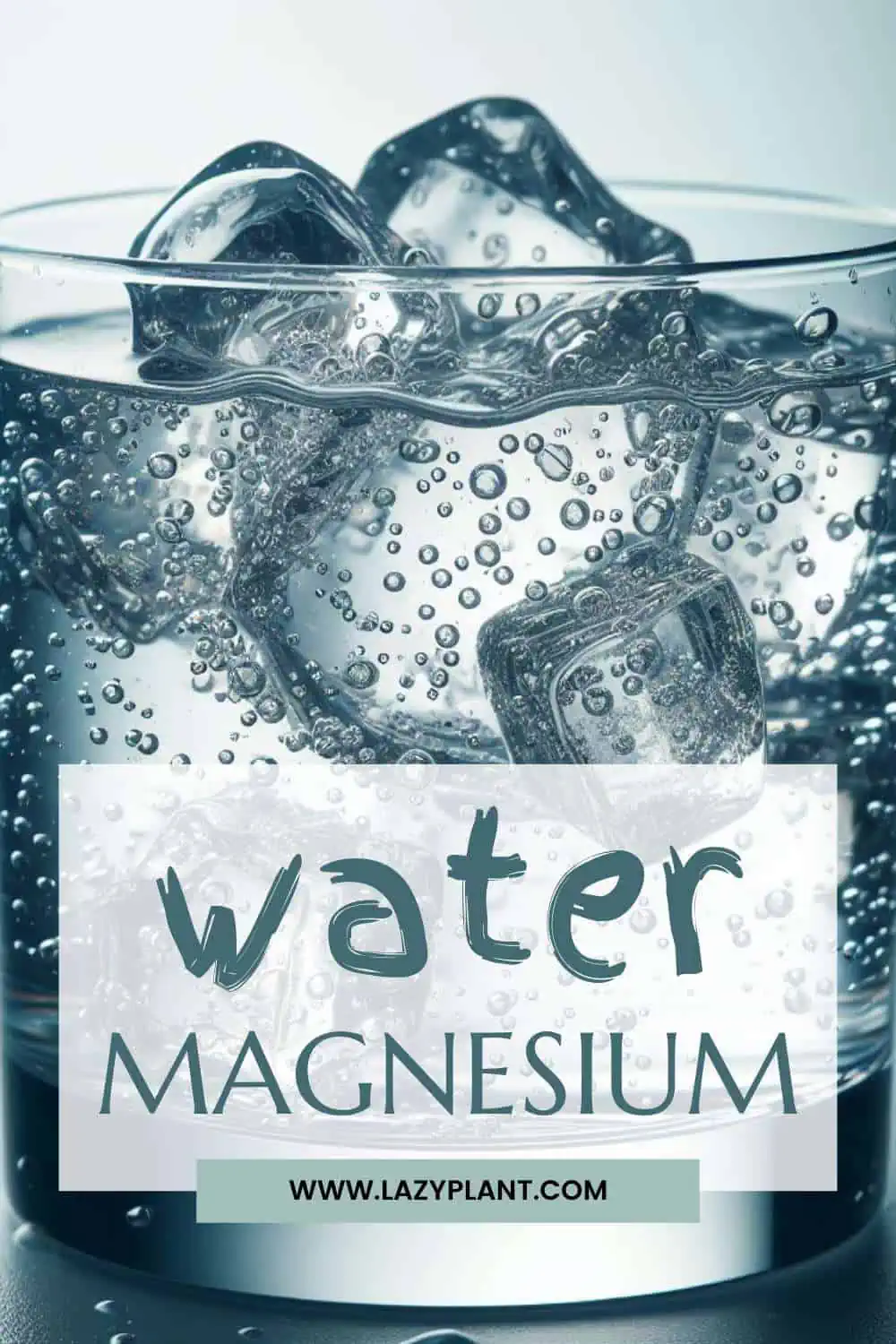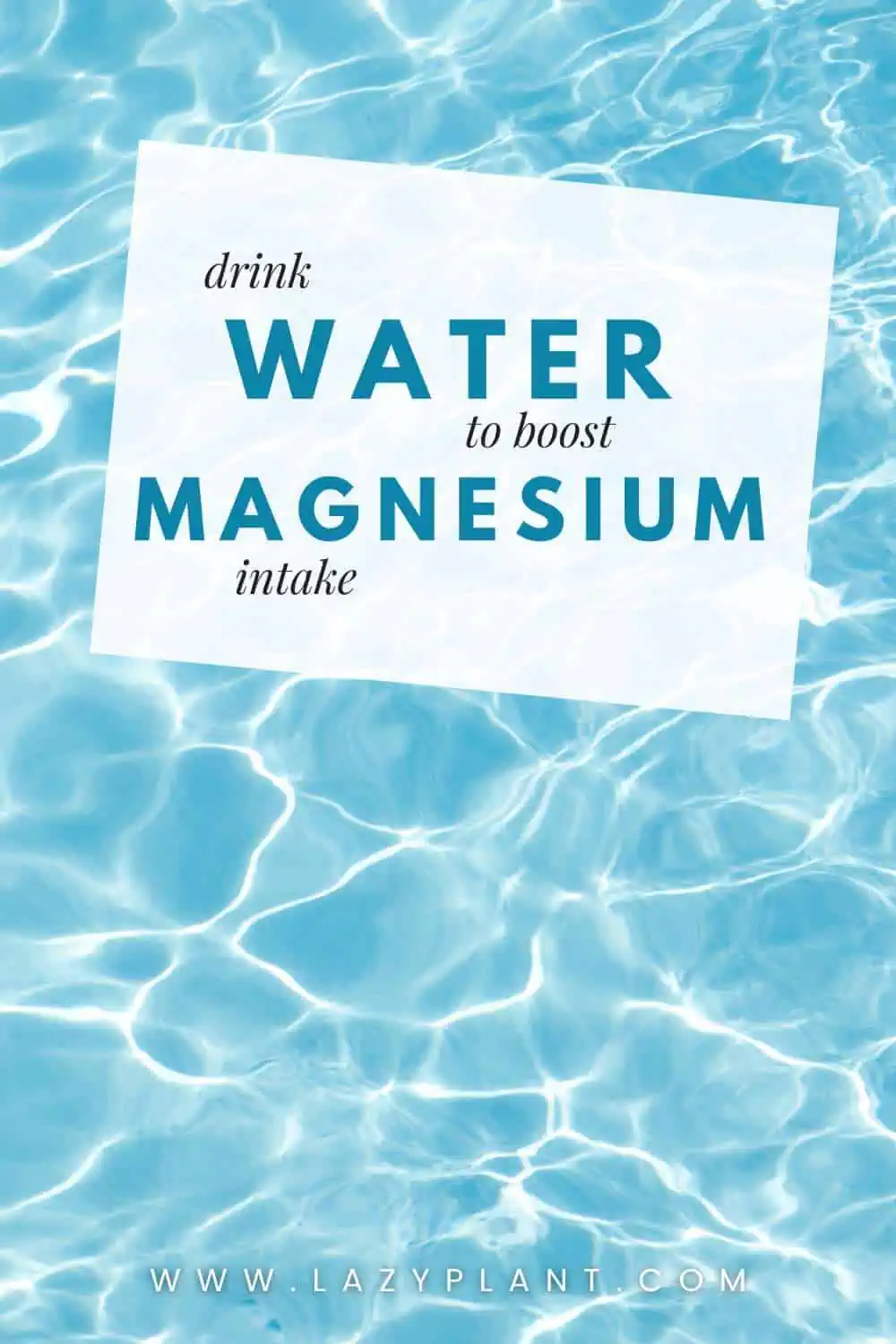Water can be a good source of magnesium. It helps meet our daily needs, as it can provide 6-31% of the required daily intake. Most tap and mineral/spring bottled waters have 0-50 mg of magnesium per Liter.
Health benefits of magnesium
Magnesium is vital for good health. It’s the fourth most abundant mineral in the body. Magnesium acts as a cofactor for more than 300 enzymes!
Magnesium plays a key role in DNA synthesis, and it’s involved in energy production, glycemic control, protein synthesis, myocardial contraction, blood pressure regulation, nerve transmission, muscle contraction, muscular relaxation, bone development and mineralization!
Furthermore, magnesium protects the body from oxidative stress, as it’s necessary for the synthesis of glutathione, which is a powerful antioxidant.
In fact, magnesium can play a therapeutic and preventive role in several conditions such as diabetes, osteoporosis, bronchial asthma, preeclampsia, migraine, obesity, and cardiovascular disease.[1,2]
What’s the recommended daily intake?
The recommended daily intake of magnesium is 400-420 mg for adult men and 310-320 mg for adult women. Teenagers and pregnant women require high magnesium dosages (360-410 mg) as well.
Does water have any magnesium?
We can get magnesium from food, beverages, and dietary supplements. Water can be a good source of magnesium as well.
All types of water (tap, mineral, spring) can contain low to high amounts of magnesium.
In fact, the magnesium content of water substantially varies. It ranges from 0 mg per liter to 130 mg per liter, depending on the region.
Every spring has a different magnesium content. Every city has a different magnesium content of tap water as well. In many cases, even different water sources within the same city have a different magnesium content.
In general, the water contains between 15 and 45 mg pf magnesium per Liter.[3]
Which water has more magnesium?
Both tap and bottled waters can be high in magnesium.
Magnesium in tap vs bottled water
The magnesium content of tap or bottled water depends on the source. There are tap waters with a much higher/lower magnesium content than bottled waters.
The magnesium content of most tap waters in North America ranges between 0 and 48 mg per Liter, whereas bottled waters have a magnesium content between 0 and 130 mg per Liter![4]
As a rule of thumb, water from ground sources is richer in magnesium and other minerals. Tap water from surface sources has on average 10 mg of magnesium per Liter. Tap water from ground sources has on average 20 mg of magnesium per Liter.

Magnesium in mineral vs spring water
Mineral and spring waters are slightly different. Spring water contains components that are naturally present in the water spring. On the contrary, mineral water may contain added minerals to achieve the desired taste.
The mean magnesium content of:
- spring water is 8 mg per Liter
- mineral water is 24 mg per Liter.
How much magnesium is in popular commercial waters?
The bestseller waters on Amazon have a magnesium content between 0 and 50 mg per Liter.
| magnesium (mg/L) | % Daily Value per Liter | |
| S.Pellegrino Sparkling Natural Mineral Water | 49 | 12% |
| Evian Natural Spring Water | 26 | 6% |
| Icelandic Glacial Natural Spring Alkaline Water | 20 | 5% |
| Acqua Panna Natural Spring Water | 20 | 5% |
| FIJI Natural Artesian Water | 15 | 4% |
| JUST Water, Premium Pure Still Spring Water | 4 | 1% |
| Waiakea Hawaiian Volcanic Water, Naturally Alkaline | 3 | 0.7% |
| Perrier Sparkling Water | 0 | 0% |
| VOSS – Premium Still Bottled Water | 0 | 0% |
| Alpine Spring Water | 0 | 0% |
Can water help us meet our daily needs?
Actually, drinking tap water or bottled mineral/spring water can be regarded as an important supplementary source of magnesium. Drinking 2 lt of magnesium-rich water a day can easily fulfill 6-31% of the recommended daily intake!
Can we get too much magnesium from water?
Healthy people can’t get too much magnesium from water. In fact, there hasn’t been established a maximum safe dose of magnesium for food or water. Only for dietary supplements. The kidneys eliminate excess amounts in the urine.
However, patients with impaired renal function or kidney failure can get too much magnesium from magnesium-rich water or food. In certain diseases, the kidneys can’t remove excess amounts of magnesium.
So, in some cases, patients should consume tap or bottled water with a low magnesium content.
How to increase the absorption rate of magnesium in water?
First, vitamin D stimulates intestinal magnesium absorption. But, vitamin D deficiency is pretty common. There aren’t many foods high in vitamin D. Many people would benefit from taking high doses of vitamin D from dietary supplements.[6]
Furthermore, we have to get adequate amounts of calcium to absorb magnesium. But, too little or too much calcium may negatively affect the absorption rate of magnesium. The calcium/magnesium ratio should be between 1.70 and 2.60.[7]
In addition, high protein and fructose intakes may improve magnesium absorption.[8]
What inhibits the absorption of magnesium in water?
The absorption rate of magnesium in water depends on many factors. Foods high in phytate, high doses of zinc or vitamin D, smoking, alcohol abuse, or taking certain drugs may interfere with the absorption of magnesium.
Common foods high in Magnesium
Magnesium is naturally found in both animal (milk, dairy, fish, meat, eggs) and plant-based foods. Green leafy vegetables, beans, legumes, nuts (e.g. walnuts), seeds, whole grains, and certain fruits are good sources of magnesium. In general, foods high in fiber are also high in magnesium.
If you want to boost your daily intake of magnesium, you should consume a serving of pumpkin or chia seeds, almonds, and spinach a day. These are the richest foods in magnesium. They provide 19-37% of the required daily intake per serving!
Moreover, bananas and avocados are the richest fruits in magnesium.
Unfortunately, dietary surveys in the United States consistently show that many people consume less than the recommended daily intake of magnesium. But, following a well-balanced, plant-based diet can provide more than enough magnesium for healthy people.
You can boost your daily magnesium intake with dietary supplements. You can find a wide variety of magnesium supplements on iHerb.
Always consult your physician before changing your diet or taking dietary supplements.
How to drink water to boost Magnesium intake?
You can skyrocket your magnesium intake by drinking smoothies containing water and other fruits and vegetables naturally rich in magnesium. Here are some smoothie recipes:
- Chocolate banana smoothie: This smoothie is rich in magnesium and is perfect for chocolate lovers. To make this smoothie, blend together 1 banana, 1 cup of almond milk, 1 tablespoon of maple syrup, and 1 tablespoon of cocoa powder.
- Spinach, avocado, and strawberry smoothie: This smoothie is packed with magnesium-rich spinach and avocado. To make this smoothie, blend together 1 cup of spinach, 1/2 avocado, 1/2 cup of strawberries, 1/2 cup of almond milk, and 1 tablespoon of honey.
- Banana and almond butter smoothie: This smoothie is rich in magnesium and is perfect for breakfast. To make this smoothie, blend together 1 banana, 1 tablespoon of almond butter, 1/2 cup of almond milk, and 1/2 cup of ice.

- Pineapple and mango smoothie: This smoothie is rich in magnesium and is perfect for a refreshing drink. To make this smoothie, blend together 1 cup of pineapple, 1 cup of mango, 1/2 cup of coconut water, and 1/2 cup of ice.
- Blueberry and banana smoothie: This smoothie is rich in magnesium and is perfect for a quick snack. To make this smoothie, blend together 1 banana, 1/2 cup of blueberries, 1/2 cup of almond milk, and 1/2 cup of ice.
- Green smoothie: This smoothie is packed with magnesium-rich spinach and kale. To make this smoothie, blend together 1 cup of spinach, 1 cup of kale, 1/2 cup of pineapple, 1/2 cup of mango, 1/2 cup of coconut water, and 1/2 cup of ice.
- Banana and peanut butter smoothie: This smoothie is rich in magnesium and is perfect for a quick breakfast. To make this smoothie, blend together 1 banana, 1 tablespoon of peanut butter, 1/2 cup of almond milk, and 1/2 cup of ice.
Here is a table that shows the magnesium content per serving for common foods that used in healthy smoothie recipes:
| Food | Serving Size | Magnesium Content | % Daily Value |
|---|---|---|---|
| Almonds | 1 oz | 80 mg | 19% |
| Arugula | 1 cup | 6 mg | 1% |
| Avocado | 1 medium | 58 mg | 14% |
| Banana | 1 medium | 32 mg | 8% |
| Cashews | 1 oz | 72 mg | 17% |
| Chia seeds | 1 oz | 111 mg | 26% |
| Quinoa | 1/2 cup | 60 mg | 14% |
| Coconut water | 1 cup | 60 mg | 14% |
| Flaxseed | 1 tablespoon | 40 mg | 10% |
| Kale | 1 cup | 30 mg | 7% |
| Mango | 1 cup | 22 mg | 5% |
| Peanut butter | 2 tablespoons | 49 mg | 12% |
| Peanuts | 1 oz | 49 mg | 12% |
| Pineapple | 1 cup | 20 mg | 5% |
| Pumpkin seeds | 1 oz | 150 mg | 36% |
| Spinach | 1 cup | 24 mg | 6% |
The % Daily Value is based on a 2,000-calorie diet and may vary depending on your daily calorie intake.